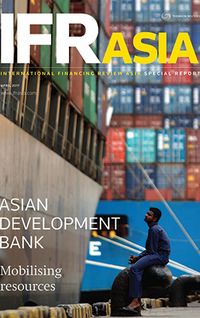For all the hype around the arrival of new multilateral lenders, concessional funding for Asian development is running scarce. Slow economic growth in much of the developed world has eaten into governments’ discretionary funding, and the migrant crisis in Europe has diverted some commitments closer to home. Asia’s growing prosperity is also leading many donors to prefer Africa and other regions where they feel their aid dollars can have more of an impact.
These pressures, coupled with Asia’s continued need to lift 330 million people above the severe poverty line of US$1.90 a day, make it essential for the ADB to consider new ways of attracting and deploying concessional funding.
“The outlook for new concessional money is limited, and that’s why we have to come out with more innovative designs and business models,” said Sujata Gupta, director of the ADB’s office of cofinancing operations. “Donors also want their resources to be a catalyst to leverage more from the private sector.”
“The recipient countries also have limited capacity to borrow more and more and there is a lot of liquidity in the system. The challenge is how to bring in these private resources without burdening the borrowing country.”
Many of the ADB’s recent agreements with donors reflect that ambition. The Canadian Climate Fund for the Private Sector in Asia, established in March 2013 with C$82.4m (US$61.4m) from the Canadian government, is the bank’s first concessional fund targeted specifically at private sector operations.
Through cofinancing alongside the ADB’s own resources, funds like the CCF can allow the bank to support a project that would otherwise exceed its own risk limits or bring down the costs of a project to make the financing viable for the sponsor and its private sector partners.
“There are instances where the project involves FX risks and we may ask them to do a hedge,” said Gupta. “The Canadian money, for instance, does not require this hedge so this brings down the overall cost of the project.”
GCF accreditation
The Green Climate Fund, headquartered in Songdo, South Korea, is the big new player in global climate finance. Founded by 194 governments with total pledges exceeding US$10bn, the GCF is emerging as an important source of concessional funds for Asia and the rest of the world.
Again in keeping with the desire to mobilise additional resources, GCF money can be used to support private sector projects. Since it approved its first project, a grant in Peru in November 2015, it has committed US$1.5bn across 35 projects, with 10% of allocated funds in the form of equity.
The ADB was the first multilateral development bank accredited to receive financing from the GCF, and the first two ADB projects have already been approved, in the form of grants in Fiji and the Pacific Islands. An accreditation master agreement – the final piece of legal documentation – is still pending.
JICA trust fund
The Japan International Cooperation Agency committed US$1.5bn of equity late in 2015 to a major trust fund, Leading Asia’s Private Infrastructure (referred to, perhaps surprisingly, as LEAP). The board approved the fund in March 2016 and operations began in earnest last August.
Since then, LEAP funds have been used for two ADB projects, and more are in the pipeline under a five-year investment window. The fund’s resources are extremely flexible, allowing the ADB access to cofinancing in the form of loans, equity investments and mezzanine finance transactions, and a small portion for non-parallel financing, where JICA will absorb some additional risk. Target projects involve private sector financing for “quality infrastructure” in a wide range of sectors.
The first LEAP cofinancing was a US$390m package for ReNew Power, an Indian renewable energy developer that counts Goldman Sachs and the ADB among its equity investors. ReNew is also attracting a considerable amount of private sector investment, notably through a US$475m Green bond in early February. Jera, a joint venture between Japan’s Tepco and Chubu Electric Power, also bought a 10% equity stake for US$200m in February.
The ADB has also used LEAP funds towards a US$109m package for the Muara Laboh geothermal power generation project in western Indonesia, also signed in January. The project company is a joint venture consisting of Indonesian geothermal developer Supreme Energy, Japan’s Sumitomo Corporation and global energy developer ENGIE. Financing is also being provided by the Japan Bank for International Cooperation and a set of commercial banks under a guarantee from Nippon Export and Investment Insurance.
“We can do only up to 25% of any private sector project and we have dollar limits, too, so the rationale for LEAP is that we can bring in another slug of money above our own limits,” said Michael Barrow, head of the bank’s private sector operations department. “The certainty of funds allows us to offer quite big and helpful financing packages to the borrower.”
Future disbursements under discussion include equity investments and non-parallel cofinancings, which can be blended with financing from the ADB and others to reduce interest costs or mitigate credit risks.
To view all special report articles please click here and to see the digital version of this report please click here.
To purchase printed copies or a PDF of this report, please email gloria.balbastro@thomsonreuters.com.


